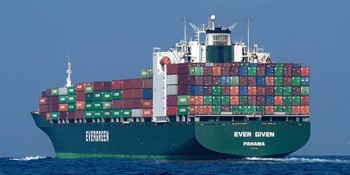
The food we eat, clothes we wear, cars we drive and gadgets we use all require natural resources to produce, often with consequences for biodiversity and ecosystems. Under the UN Convention on Biological Diversity (CBD), countries have pledged to take steps by 2020 to implement sustainable production and consumption plans and keep the impacts of use of natural resources “well within safe ecological limits”.
Progress has been slow to date, but there is a growing body of research that aims to gauge the environmental impacts of the goods and services we consume, wherever in the world they are produced. Now, building on extensive prior work in this field within SEI and its partners (such as those involved in the OPEN:EU project), researchers at SEI in York have built a model that looks at the pressure that consumption places on biodiversity overseas.
The project, funded by the UK Department for Environment, Food and Rural Affairs (Defra), developed an assessment framework to trace direct and indirect links between consumption in the UK and environmental impacts that occur due to production in other countries.
A global trade model that retains product-level production detail and quantitative links to associated environmental impacts was developed to allow top-down assessment of potential drivers of biodiversity loss, such as land-use change and water use.
The model can be used to explore the impacts of over 200 agricultural products (and many other products of non-agricultural systems, e.g. mining, forestry and fisheries), and can break down consumption impacts resulting from demand from specific product groups.
“For example, we found that the amount of soybeans required to meet UK demand for goods and services – processed food, meat, leather, etc. – requires about 1,270,000 ha of crop land,” says Elena Dawkins, an SEI research associate and co-author of the model. “To produce that domestically, we would need about 20% of the UK’s total crop land.”
“The approach presents a new perspective on the global impacts of UK consumption, which is potentially highly powerful for undertaking a wide analysis of potential drivers of biodiversity loss in producing regions, and simultaneously assessing a variety of different commodities in a consistent, comparable and repeatable manner,” the authors wrote.
The model can also help policy-makers set priorities, by showing where in the world consumption in the UK could, without adequate mitigation, place the greatest pressure on resources, land use, and water and which categories of goods are responsible. By providing contextual information, such as relative water scarcity and species vulnerability, the framework also gives an indication of the potential biodiversity impact associated with production within a country.
“This model is designed to inform national policy development,” says Chris West, co-author of the report and an SEI research associate. “First, however, we need to do some further development, testing and implementation of the model to provide an ongoing time series of the data – in other words, an indicator to assess change.”
In addition, there is potential to downscale the information to make it useful for businesses and consumers, West says. “This is something that I think we will look to pursue in future. Integration of techniques into existing tools such as REAP Petite may be possible, for example.”
Before that, West says, the team would like to undertake an analysis for more products, and for consumption in more countries – such as the U.S., China and Sweden. Thus, even as they continue to work on the UK model, the researchers are talking with colleagues in other SEI centres, and with partners in other countries, about ways to take the model forward.
Read the report (external link to Defra website)
Design and development by Soapbox.


